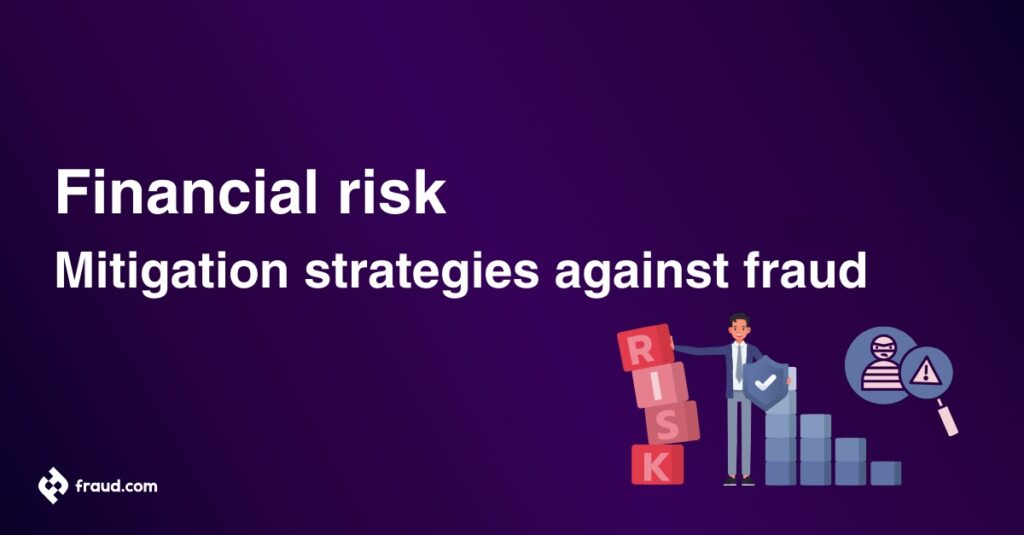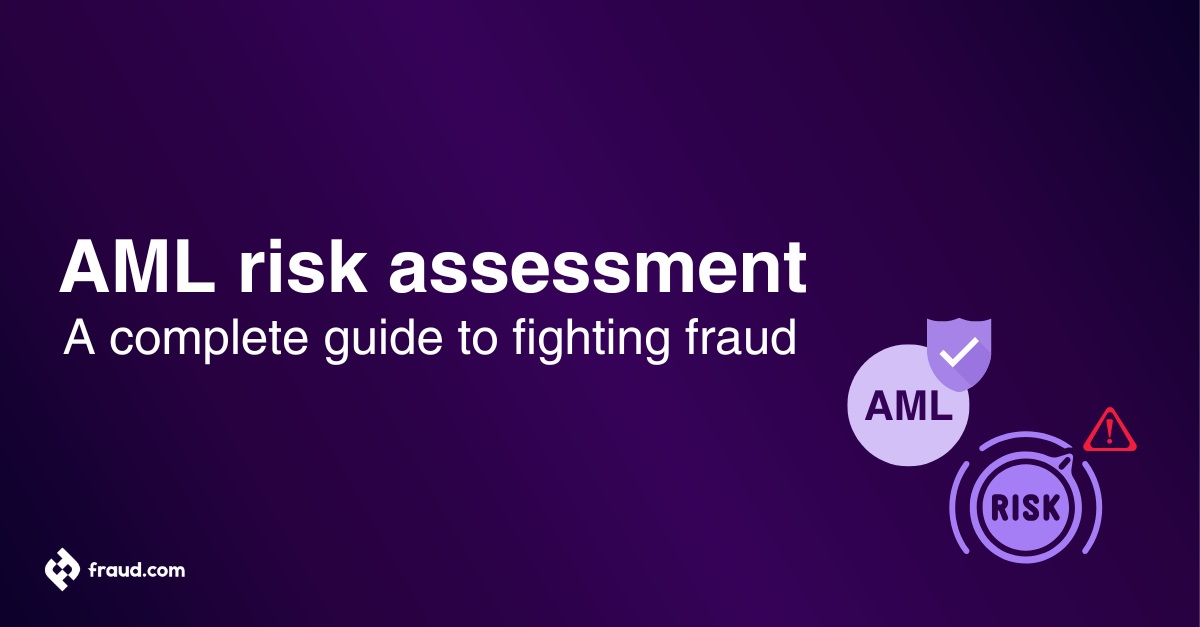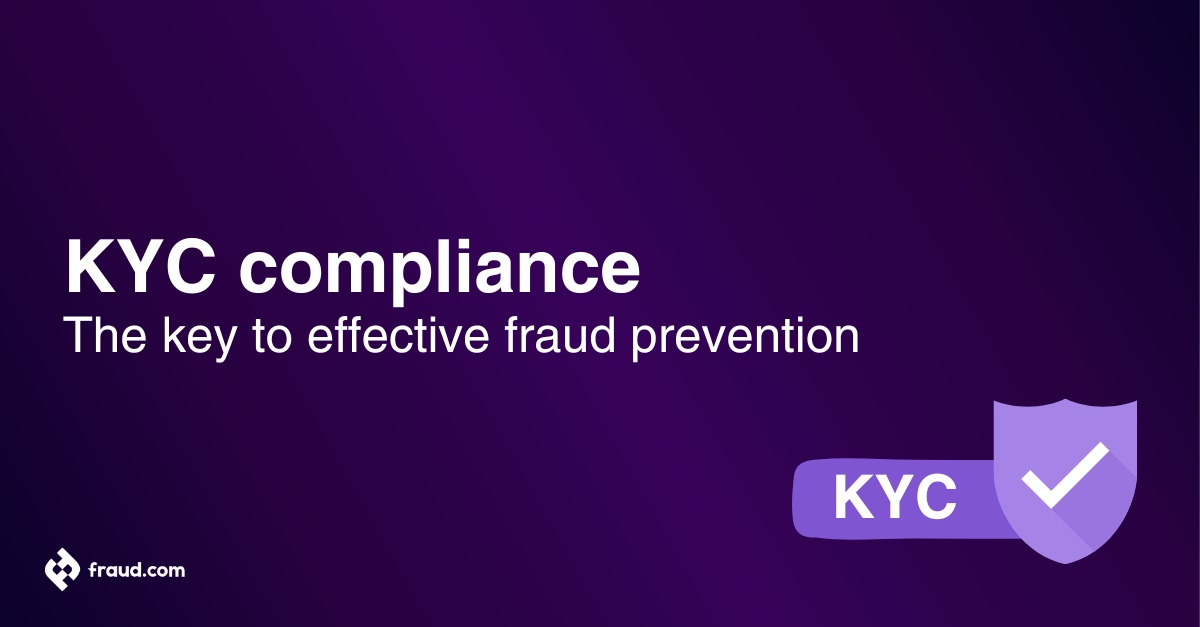In today’s business landscape, financial institutions face a large variety of risks, including those related to fraud. This article aims to delve into the relationship between various types of financial risks and fraud, offering comprehensive insights into financial risk management strategies with a primary focus on mitigating fraud-related risks. Financial institutions operate within dynamic environments where financial risks among market risk, credit risk, liquidity risk, and operational risk are constantly at play.
These institutions face financial risks and must navigate fluctuations in interest rates, foreign exchange rates, and stock prices while ensuring the integrity of financial instruments and investment decisions. In such a complex landscape, the ability to identify financial risks and implement robust financial risk management processes is crucial for safeguarding long-term financial stability and mitigating the impact of fraudulent activities.
By understanding the interplay between different types of financial risks and fraud, financial institutions can develop proactive strategies to protect their assets, optimize cash flow, and thrive in competitive financial markets.
Table of Contents
ToggleWhat is financial risk?
Financial risk encompasses the potential for loss or uncertainty stemming from financial markets, investments, or transactions, and it’s intricately linked to the fight against fraud, given that fraudulent activities can profoundly impact an organization’s financial stability and performance. Thus, grasping financial risk is crucial for implementing effective strategies to combat fraud and safeguard assets.
Various types of risks arise in m forms, including market risk, credit risk, liquidity risk, and operational risk. Market risk arises from fluctuations in interest rates, exchange rates, and stock prices, which can affect the value of investments and financial instruments, and it’s vital to consider these market conditions when assessing financial risk. Credit risk pertains to the possibility of borrowers defaulting on loans or failing to fulfill contractual obligations, leading to financial losses for lenders. Understanding the cons of financial risk, such as potential defaults, is essential for risk management.
Liquidity risk concerns the inability to convert assets into cash quickly without significant loss in value, potentially hampering an institution’s ability to meet its financial obligations. Risk involves assessing the impact of liquidity on financial stability. Operational risk encompasses risks associated with internal processes, systems, and human error, which can result in financial losses or reputational damage. Mitigating operational risk is crucial for maintaining financial stability and market credibility.
Understanding these types of financial risks is essential for organizations to implement comprehensive risk management strategies that address vulnerabilities and mitigate the potential impact of fraud.
Understanding financial risk management
Financial risk management entails the identification, assessment, and control of potential risks that could impede an organization’s financial objectives. Strategies for financial risk management encompass the risk management process, including risk assessment, mitigation, transfer, and ongoing monitoring. By adopting effective financial risk management practices, organizations can proactively anticipate and mitigate the adverse impact of fraud and other risks on their financial well-being.
Understanding financial risk management is essential for organizations to navigate the complexities of today’s business environment successfully. The risk management process involves a systematic approach to identifying, analyzing, and addressing risks across various facets of operations. This process enables organizations to assess the likelihood and potential impact of risks, prioritize them based on their significance, and implement appropriate strategies to manage and mitigate them effectively.
Furthermore, continuous monitoring and assessment are essential components of the risk management procedure, guaranteeing that organizations remain alert to developing dangers and changing market situations. By incorporating risk management into their fundamental business operations, organizations can boost their robustness, flexibility, and competitive edge amidst uncertainties, such as those presented by fraud and other fiscal risks.
Benefits of financial risk management
Implementing robust financial risk management strategies offers numerous benefits across financial institutions:
- Enhances financial stability and resilience: By proactively identifying and addressing potential risks, financial institutions can enhance their stability and resilience. This enables them to better withstand economic uncertainties, market fluctuations, and unexpected events, ensuring continuity of operations and minimizing disruptions.
- Protects assets and investments: Effective risk management serves as a safeguard against potential losses arising from various risks, including fraud, market volatility, credit defaults, and operational failures. By implementing measures to mitigate these risks, institutions protect their assets and investments, preserving value and maintaining liquidity.
- Improves decision-making: Financial risk management provides decision-makers with accurate and timely information, enabling them to make informed choices. By analyzing risk factors and their potential impact on performance, institutions can optimize resource allocation, investment decisions, and strategic planning, enhancing overall decision-making processes.
- Builds trust and confidence: A robust risk management framework fosters trust and confidence among stakeholders, including investors, customers, and regulatory authorities. By demonstrating a commitment to identifying and managing risks effectively, institutions instill confidence in their ability to protect stakeholders’ interests and fulfill regulatory obligations, thereby enhancing reputation and credibility.
- Enhances regulatory compliance: Implementing effective risk management practices helps institutions comply with regulatory requirements and industry standards. By adhering to regulatory guidelines and reporting obligations, institutions mitigate the risk of non-compliance penalties, legal liabilities, and reputational damage, ensuring continued operations within a compliant framework.
- Reduces cost of capital: By effectively managing risks, financial institutions can reduce their cost of capital and borrowing expenses. Investors and creditors perceive institutions with robust risk management practices as lower-risk entities, resulting in lower borrowing costs and improved access to capital markets, which in turn, enhances financial performance and competitiveness.
- Optimizes resource allocation: Risk management allows institutions to optimize resource allocation by identifying and prioritizing risks based on their potential impact and likelihood. By allocating resources effectively to mitigate high-priority risks, institutions can minimize losses, enhance efficiency, and maximize returns on investment, thereby improving overall performance and profitability.
- Promotes innovation and growth: A proactive approach to risk management fosters a culture of innovation and growth within financial institutions. By managing risks effectively, institutions can confidently explore new business opportunities, develop innovative products and services, and expand into new markets, driving sustainable growth and competitive advantage in the long term.
These benefits underscore the critical importance of implementing comprehensive financial risk management strategies across financial institutions, enabling them to navigate challenges, capitalize on opportunities, and achieve their strategic objectives in today’s dynamic and evolving business landscape.
The relationship between financial risk and fraud
Fraud and financial risk are closely intertwined, affecting financial institutions across the board. Fraudulent activities such as embezzlement, money laundering, accounting fraud, cyber fraud among many other types of financial fraud, pose significant financial risks to businesses, resulting in financial losses, reputational damage, and legal liabilities. Successfully mitigating financial risk requires addressing vulnerabilities that make organizations susceptible to fraud, including weak internal controls and insufficient oversight.
Let’s explore in some detail the relationship between financial risk and fraud:
Market risk and fraud
- Fluctuations in stock prices can create opportunities for fraudulent activities such as market manipulation or insider trading. These activities can undermine market integrity and erode investor trust.
- Fraudulent schemes may exploit market uncertainties to deceive investors or manipulate asset prices, leading to distorted market dynamics and unfair advantages for perpetrators.
Credit risk and fraud
- Fraudulent loan applications or credit card transactions can lead to credit losses for financial institutions. Such losses not only impact financial stability but also erode customer confidence in the institution’s lending practices.
- Identity theft and impersonation can result in defaults or non-payment, increasing credit risk exposure and necessitating costly recovery efforts for financial institutions.
Operational risk and fraud
- Inadequate internal controls and procedures may facilitate fraudulent activities within financial institutions, exposing them to operational failures and reputational damage. Strengthening internal controls is essential to mitigate the risk of operational fraud.
- Cybersecurity breaches can lead to data theft, financial fraud, and operational disruptions, highlighting the critical importance of robust cybersecurity measures to safeguard against fraudulent activities.
Liquidity risk and fraud
- Fraudulent activities such as misrepresentation of liquidity positions or manipulation of cash flows can lead to liquidity crises, impairing an institution’s ability to meet its financial obligations and maintain market confidence.
- Ponzi schemes or fraudulent investment schemes can drain liquidity from financial institutions, exacerbating liquidity risk and potentially leading to systemic repercussions.
Foreign exchange risk and fraud
- Manipulation of exchange rates or fraudulent forex transactions can expose financial institutions to foreign exchange risks, resulting in financial losses and reputational damage. Implementing stringent controls and oversight mechanisms is essential to mitigate the risk of foreign exchange fraud.
- Cross-border fraud schemes may exploit loopholes in currency exchange mechanisms to evade detection, posing significant challenges for financial institutions operating in global markets. Enhanced cross-border collaboration and regulatory frameworks are necessary to combat such fraudulent activities effectively.
Understanding the intricate relationship between different types of financial risks and fraud is essential for developing comprehensive risk management strategies. By addressing vulnerabilities and implementing robust controls, financial institutions can effectively mitigate the impact of fraudulent activities and safeguard their financial stability.
Financial risk mitigation strategies
Financial institutions operate in a complex and dynamic environment where they face various risks that can impact their financial stability and performance. Mitigating these risks, especially those related to fraud, is crucial for ensuring the long-term success and sustainability of these institutions. In this section, we will explore effective financial risk mitigation strategies that institutions can implement to protect their assets and enhance their resilience in the face of uncertainties.
These are among some of the financial risk mitigation strategies:
- Implementing robust internal controls: Establishing strong internal controls is essential for mitigating financial risks, including those associated with fraud. This involves segregating duties, conducting regular audits, and implementing comprehensive employee training programs to ensure that employees are aware of their responsibilities and understand the importance of adherence to policies and procedures.
- Leveraging technology solutions: Technology plays a vital role in detecting and preventing fraud. Financial institutions can leverage advanced data analytics, artificial intelligence (AI), and machine learning algorithms to identify patterns and anomalies indicative of fraudulent activities. These technologies enable institutions to enhance their fraud detection capabilities and respond swiftly to emerging threats.
- Strengthening vendor and supplier management: Financial institutions rely on various vendors and suppliers to support their operations. However, these external relationships can also pose risks, particularly if vendors or suppliers engage in fraudulent activities. To mitigate these risks, institutions should conduct thorough due diligence when selecting vendors and establish contractual safeguards to mitigate potential risks.
- Enhancing employee awareness and training: Employees are often the first line of defense against fraud. By educating employees about fraud risks and fostering a culture of integrity and vigilance, institutions can empower their staff to recognize and report suspicious activities promptly. Regular training programs can also help employees stay updated on emerging fraud trends and best practices for fraud prevention.
- Diversifying investments and portfolios: Diversification is a fundamental strategy for mitigating investment-related risks. By spreading investments across different asset classes, sectors, and geographical regions, institutions can reduce their exposure to specific risks and minimize the impact of market fluctuations. Additionally, diversification can enhance the resilience of investment portfolios and improve overall risk-adjusted returns.
- Implementing risk transfer mechanisms: In some cases, financial institutions may choose to transfer certain risks to third parties through insurance or other risk transfer mechanisms. This can help institutions mitigate the financial impact of unforeseen events, such as natural disasters or regulatory changes, by transferring the associated liabilities to external parties.
- Monitoring and reporting: Continuous monitoring and reporting are essential components of effective risk management. Financial institutions should establish robust monitoring mechanisms to track key risk indicators and identify potential vulnerabilities promptly. Regular reporting to senior management and regulatory authorities ensures transparency and accountability in risk management practices.
By implementing these comprehensive financial risk mitigation strategies, financial institutions can strengthen their resilience to fraud and other risks, safeguard their assets, and enhance their long-term viability in today’s increasingly complex business environment.
Financial risk and fraud mitigation by aiReflex
aiReflex, an innovative AI-powered platform, stands at the forefront of assisting organizations, generally financial risk, including financial institutions, in mitigating financial risk and detecting fraudulent activities. By harnessing the power of predictive analytics and pattern recognition, aiReflex excels in identifying anomalies and suspicious transactions that may indicate fraud, providing a proactive approach to risk management.
Leveraging sophisticated machine learning algorithms, aiReflex continuously evolves to adapt to emerging fraud threats. Its real-time insights and actionable insights empower organizations to stay one step ahead in the ongoing battle against financial risks, ensuring timely and effective mitigation strategies.
- Continuous monitoring and adaptive learning: aiReflex’s continuous monitoring capabilities enable real-time tracking of financial transactions and market trends, ensuring prompt identification of potential risks and fraudulent activities. Its adaptive learning functionality allows the platform to evolve with the changing landscape of financial markets, enhancing its effectiveness over the long term.
- Integration with regulatory compliance standards: aiReflex seamlessly integrates with regulatory compliance standards, providing financial institutions with a robust tool to ensure adherence to industry regulations by providing detailed reports with comprehensive table of contents. This integration helps in mitigating not only financial risks but also the risk of non-compliance, safeguarding institutions from regulatory penalties and reputational damage.
- Scalability and customization: Recognizing the diverse needs of financial institutions, aiReflex offers scalability and customization options. Whether an institution is a large multinational corporation or a smaller entity, aiReflex can be tailored to address specific risk profiles, ensuring that the platform aligns seamlessly with the institution’s unique requirements.
- Comprehensive reporting and analytics: aiReflex goes beyond detection by providing comprehensive reporting and analytics. Institutions can gain valuable insights into emerging patterns, historical trends, and potential vulnerabilities, empowering them to make informed decisions and enhance their overall risk management strategy.
This comprehensive overview emphasizes the pivotal role that advanced technologies, such as aiReflex, play in the financial risk management landscape. By seamlessly integrating with existing systems and adapting to the evolving nature of financial risks, aiReflex provides financial institutions with a powerful tool to not only mitigate fraud-related risks but also to foster a resilient and proactive risk management culture in the face of changing financial markets.









